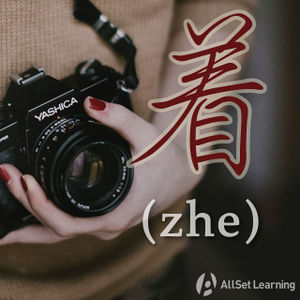Difference between revisions of "Alternative existential sentences"
| Line 47: | Line 47: | ||
Note that 是 is used to describe a singular, or one object existing somewhere while 有 can refer to multiple objects/ people. | Note that 是 is used to describe a singular, or one object existing somewhere while 有 can refer to multiple objects/ people. | ||
| − | == See | + | == See also == |
*[[Indicating location with "zai" before verbs]] | *[[Indicating location with "zai" before verbs]] | ||
| Line 55: | Line 55: | ||
==Sources and Further Reading== | ==Sources and Further Reading== | ||
| − | ===Books=== | + | === Books === |
* [[Integrated Chinese: Level 1, Part 1 (3rd ed)]] (p. 128) [http://www.amazon.com/gp/product/0887276385/ref=as_li_ss_tl?ie=UTF8&tag=allset-20&linkCode=as2&camp=217145&creative=399369&creativeASIN=0887276385 →buy] | * [[Integrated Chinese: Level 1, Part 1 (3rd ed)]] (p. 128) [http://www.amazon.com/gp/product/0887276385/ref=as_li_ss_tl?ie=UTF8&tag=allset-20&linkCode=as2&camp=217145&creative=399369&creativeASIN=0887276385 →buy] | ||
| Line 65: | Line 65: | ||
{{Basic Grammar|着|B1|Place + Verb + 着 + Noun Phrase|桌子 上 放 <em>着</em> 一 本 书 。|grammar point|ASGAC619}} | {{Basic Grammar|着|B1|Place + Verb + 着 + Noun Phrase|桌子 上 放 <em>着</em> 一 本 书 。|grammar point|ASGAC619}} | ||
{{Rel char|是}} | {{Rel char|是}} | ||
| − | {{Similar| | + | {{Similar|Aspect particle "zhe"}} |
| − | {{Similar| | + | {{Similar|Expressing actions in progress (full form)}} |
| − | |||
{{Structure|Sentence Patterns}} | {{Structure|Sentence Patterns}} | ||
{{Used for|Describing existence}} | {{Used for|Describing existence}} | ||
Revision as of 07:01, 4 December 2017
-
Level
-
Similar to
-
Used for
-
Keywords
It's not just 在 (zài) and 有 (yǒu) that can be used to form existential sentences, expressing something's existence in a certain place or location. The word order may be a little different from what you are used to, but these are still fairly ways to make everyday statements such as, "there is a book lying on the desk."
Contents
Pattern with 着
Structure
Place + Verb + 着 + [Noun Phrase]
Examples
- 桌子 上 放 着 一 本 书 。There is a book on the desk.
- 大厅 里 站 着 一些 警察 。There are several policemen standing in the hall.
- 教室 里 坐 着 两 百 多 个 学生 。There are more than two hundred students sitting in the classroom.
- 地下室 里 堆 着 很 多 旧 东西 。The basement is piled with lots of old stuff.
- 楼下 停 着 几 辆 车 。A few cars are parked downstairs.
Pattern with 是
是字句对事物的判断具有排他性,主语是表示方位或处所意义的词语。"是"后面的宾语是这个处所范围内唯一的事物。
Structure
Place + 是 + [Noun Phrase]
Examples
- 洗衣机 里 是 一些 脏 衣服 。There is nothing in the washing machine other than the dirty clothes.There are dirty clothes inside the washing machine.
- 袋子 里 是 我 的 午饭 。The only thing in the bag is my lunch.My lunch is in the bag.
- 墙 上 都 是 他 家人 的 照片 。There is nothing on the wall other than his family's photos.His family's photos are hanging on the wall.
- 盒子 里 是 你 的 礼物 。Other than your gift, there is nothing else in the box.The gifts that I bought for my friends are inside my suitcase.
- 桌子 上 是 孩子们 昨天 画 的 画 。The pictures that the kids drew yesterday are the only things on the desk.The pictures that the kids drew yesterday are on the desk.
Note that 是 is used to describe a singular, or one object existing somewhere while 有 can refer to multiple objects/ people.
See also
- Indicating location with "zai" before verbs
- Special cases of "zai" following verbs
- Expressing existence in a place with "zai"
Sources and Further Reading
Books
- Integrated Chinese: Level 1, Part 1 (3rd ed) (p. 128) →buy
- Integrated Chinese: Level 2, Part 1 (p. 191) →buy
- Integrated Chinese: Level 2, Part 2 (pp. 264, 325)→buy
- New Practical Chinese Reader 4 (新实用汉语课本4) (pp. 40-1, 164-5, 185) →buy



